Parent Company Targets It for Digital-Only
Columnists Urge More Pressure on NFL
China’s Press Intimidation on Full Display
. . . Asian Americans Buoyed by Seeing Their Own
News Leader: True U.S. History Must Be Reported
. . . Reckoning Brought Limited DEI Progress
Supreme Court Demographics Have Consequences
NABJ Calls for a Black CEO at CNN
‘Entertainment Masquerading as Journalism’
(more to come)
Support Journal-ismsView this post on Instagram
Parent Company Targets It for Digital-Only
People en Español, the nation’s bestselling Spanish-language magazine, dubbed “The Most Trusted Voice In Hispanic Culture,” is ending its print edition after 25 years, its parent company has announced.
 The company, Dotdash, a subsidiary of media mogul Barry Diller’s Dotdash Meredith group, is similarly ending the print editions of Entertainment Weekly, InStyle, EatingWell, Health and Parents, converting them to digital only. But unlike the others, People en Español is especially vulnerable and not likely to survive, Samir Husni (pictured), known as “Mr. Magazine,” told Journal-isms on Saturday.
The company, Dotdash, a subsidiary of media mogul Barry Diller’s Dotdash Meredith group, is similarly ending the print editions of Entertainment Weekly, InStyle, EatingWell, Health and Parents, converting them to digital only. But unlike the others, People en Español is especially vulnerable and not likely to survive, Samir Husni (pictured), known as “Mr. Magazine,” told Journal-isms on Saturday.
“The decision to evolve these brands to digital-only means that some jobs – roughly 200 roles primarily supporting our print operations – will be eliminated,” Dotdash Meredith CEO Neil Vogel said in a Wednesday memo to the staff, obtained by Variety.
A spokeswoman told the EFE news service, “People en Español will continue to prosper digitally and benefit from the large investments we are making across all of our brands in 2022.”
Nevertheless, the People en Español audience differs from the others in significant ways.
For one thing, 33 percent of Latino families do not have regular access to the internet, and 37 percent have access only from cell phones, according to a survey from Abriendo Puertas/Opening Doors, a parent advocacy group.
For another, there is the example of Teen People, which went digital-only in 2006 and has since disappeared. Not to mention examples from the Black press: The Chicago Defender, Ebony and Jet magazines went digital-only and lost visibility.
 People en Español Publisher Monique Manso (pictured) declined to comment. But Husni interviewed Manso and Editor-in-Chief Armando Correa a year ago in advance of their publication’s 25th anniversary.
People en Español Publisher Monique Manso (pictured) declined to comment. But Husni interviewed Manso and Editor-in-Chief Armando Correa a year ago in advance of their publication’s 25th anniversary.
“Print is important; the celebrities love to be on the cover of the magazine and they want to be on the website,” Correa said then. “But when you’re negotiating an exclusive, it’s print. And the loyalty – we have almost half a million subscribers every month.”
Manso added, “And it’s the print piece that makes them want to give that exclusive. . . . There’s a cultural relevancy to magazines and newspapers for Latinos. And because these are multigenerational households, that cultural relationship, that emotional relationship to print is passed down through the generations. And that’s why so much of our story is about readers per copy.”
Now a monthly with a circulation of 500,000, People en Español launched on a test basis in 1997. Its existence is a tribute the value of a diverse work force.
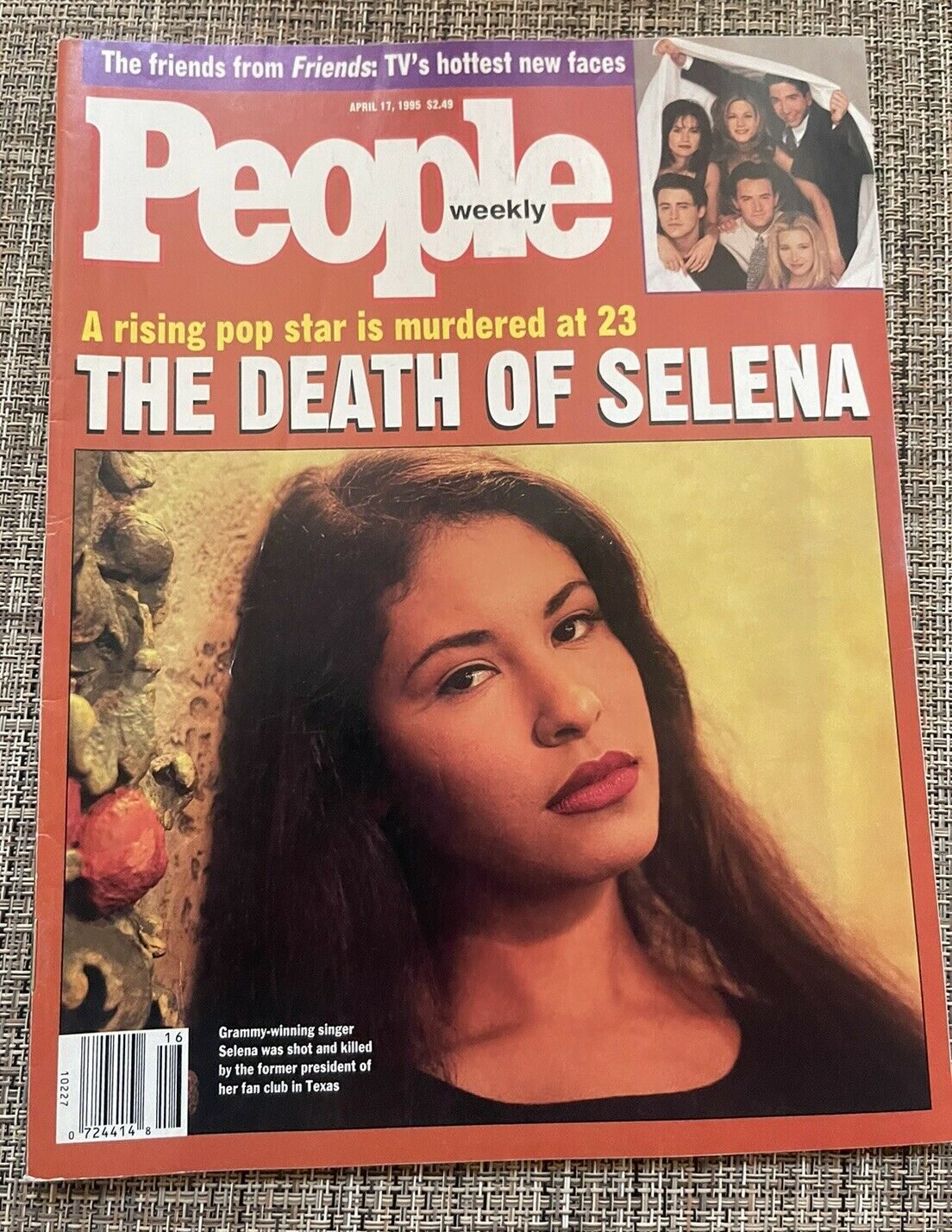 Norman Pearlstine, then Time Inc. editor-in-chief, told Journal-isms in 2011 that the publication sprang from the March 31, 1995, killing of the Tejano singer Selena in Corpus Christi, Texas, by the former head of her fan club.
Norman Pearlstine, then Time Inc. editor-in-chief, told Journal-isms in 2011 that the publication sprang from the March 31, 1995, killing of the Tejano singer Selena in Corpus Christi, Texas, by the former head of her fan club.
Most Time Inc. employees didn’t know who Selena was, much less the extent of her following, but Latino employees suggested she be put on the cover of the Southwest and Texas editions of People (pictured). The issue “sold spectacularly,” Pearlstine said. Latino employees expanded Time Inc.’s horizons.
Iowa-based Meredith Corp., which publishes magazines such as Better Homes and Gardens, bought Time Inc. in 2017 in a $2.8 billion deal that included People en Español. Last year, IAC Dotdash acquired Meredith Corp. for $2.7 billion.
 Editor Correa (pictured) told Husni last year that “when People en Español was created, Time was acquired by Warner and became Time Warner. And then AOL acquired Time Warner. They never really knew what to do with People en Español. It then became independent and was a public company. And I remember we had a couple of meetings, Monique and I, and they were thinking that they needed to change People en Español for the English dominant Latinos. Then it was, ‘we have to shut down People en Español.’ And that was on a daily basis then.
Editor Correa (pictured) told Husni last year that “when People en Español was created, Time was acquired by Warner and became Time Warner. And then AOL acquired Time Warner. They never really knew what to do with People en Español. It then became independent and was a public company. And I remember we had a couple of meetings, Monique and I, and they were thinking that they needed to change People en Español for the English dominant Latinos. Then it was, ‘we have to shut down People en Español.’ And that was on a daily basis then.
“But we were acquired by Meredith and we have their full support. Meredith understands that our community, our audience is important for the company.”
Vogel said Wednesday in his memo to the staff, “Today’s step is not a cost savings exercise and it is not about capturing synergies or any other acquisition jargon, it is about embracing the inevitable digital future for the affected brands. . . . “
Husni, founder and director at Magazine Media Center, said that the new company had no one in its leadership with a magazine background, that it has taken media companies years to make up for their lack of diversity, and that People en Español’s employees were the most diverse in its company.
“Actions speak louder than words,” Husni said of the industry’s pro-diversity pledges.
“I’m hoping that there will be an entrepreneur to come in and fill that void.”
- Ashley Gold and Russell Contreras, Axios: The Spanish-language misinformation crisis
- Jeffrey S. Passel, Mark Hugo Lopez and D’Vera Cohn, Pew Research Center: U.S. Hispanic population continued its geographic spread in the 2010s (Feb. 3)
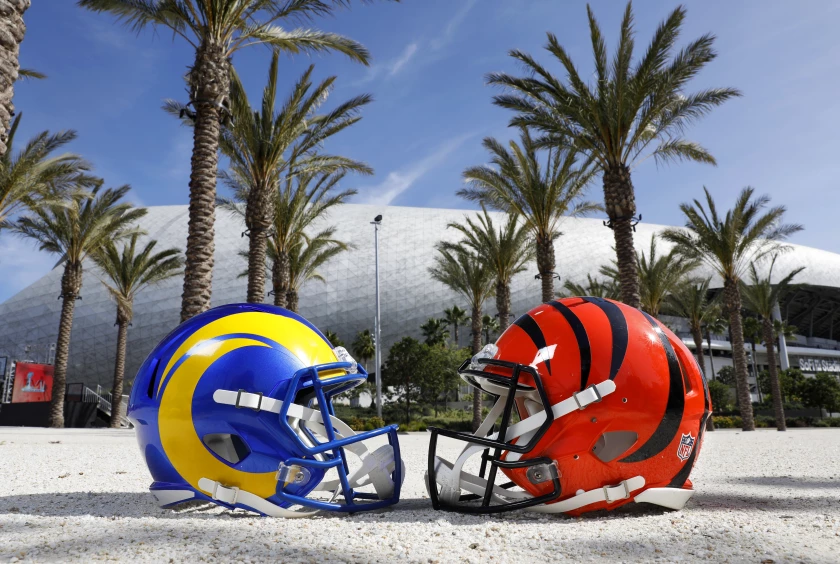
Columnists Urge More Pressure on NFL
“There are three things in life in this country you can always depend on: death, taxes and sports journalists admonishing the NFL for its lack of Black head coaches,” LZ Granderson wrote over the Martin Luther King holiday for the Los Angeles Times.
He added, “there’s an aspect to this conversation that is often overlooked when it comes to this annual critique of the NFL’s hiring practices: There are not a lot of areas of American life that have been much different. . . .”
Indeed, in September, Richard Lapchick released the latest report card from The Institute for Diversity and Ethics in Sport, detailing race and gender representation among sports media.
“Over the three-plus years since the previous study was released, progress was achieved, but it was minimal. The story of our media is that it remains predominantly white and male — and that’s one narrative that must continue to change at a more rapid pace,” Lapchick wrote.
On Feb. 1 came the class-action lawsuit from Brian Flores, the former Miami Dolphins head coach, against the NFL and three teams, alleging racial discrimination in the league’s hiring practices.
“I’m wondering what NFL players are going to do about it,” Granderson wrote.
The columnist quoted from William C. Rhoden’s “Forty Million Dollar Slaves,” a 2006 book critiquing the relationship modern-day Black athletes have with the sports industry.
Rhoden himself weighed in on The Undefeated, also citing the need to turn up the heat: “The relationship between Black people and the NFL has often been a marriage of convenience, with progress only being brought about by pressure,” Rhoden wrote on Feb. 2.
“From the time it was formed in 1920, the NFL, first known as the American Professional Football Association, has had a complicated relationship with Black players. A ‘gentleman’s agreement’ among the owners kept Black players out of the NFL from 1934 until 1946. Even when Kenny Washington and Woody Strode joined the Los Angeles Rams in 1946, their presence was brought about by civic pressure.
Rhoden quoted Tony Dungy, former NFL and Hall of Fame head coach and broadcaster.
“ ‘I see guys who are really good candidates not get jobs and I see other guys with the same credentials get jobs. Last year, we had four Black coordinators in the Super Bowl. In years past, Super Bowl coordinators would also be the hot guys.’
“None of the four was hired.
“Black players have become the foundation of the NFL. In 2020, NFL commissioner Roger Goodell gushed that, ‘Without Black players, there would be no National Football League.’
“Note that Goodell said Black players, not Black head coaches.
“Flores’ unprecedented suit will likely be the impetus to overhaul the Rooney Rule,” which initially required teams to interview at least one external candidate of color for a head coaching vacancy. “More than that, the lawsuit will be the next assault on the NFL’s granite wall of resistance to African American progress in the league.
“The walls eventually will come tumbling down, but at what price?”
- Kevin Blackistone with Leila Fadel, NPR: Ex-NFL head coach sues the league alleging racism in its hiring practices (Feb. 2)
- Tim Dahlberg, Associated Press: If racism wasn’t enough, there’s always NFL game fix (Feb. 2)
- Renée Graham, Boston Globe: America’s national pastimes — football and racism (Feb. 4)
- Leonard Greene, Daily News, New York: Coach Brian Flores’ NFL racial discrimination lawsuit is a Hail Mary pass, but it’s right on target
- Jemele Hill, the Atlantic: The Continuing Humiliation of Black NFL Coaches (Jan. 22)
- Earl Ofari Hutchinson, Hutchinson Report: Why I Will Not Watch the Superbowl (Feb. 2)
- David Lauter, Los Angeles Times: Many Republicans think the NFL does too much for Black players and are losing interest in the league, poll shows
- Gregory Molette, Jasmine Brand: Spike Lee To Direct Documentary On Colin Kaepernick (Feb. 3)
- Donovan X. Ramsey, Los Angeles Times: For Inglewood, Super Bowl brings hopeful glow after years of stagnation and anxiety
- Jason Reid, The Undefeated: Roger Goodell knows NFL is failing at hiring Black coaches, but what will he do about it?
- Erika D. Smith, Los Angeles Times: Even with a Super Bowl, why must the NFL make it so hard to be Black and a fan?
- Michael Smith and Michael Holley, NBC Sports: Is media partly responsible for NFL’s issues? (video)
- Arnie Stapleton, Associated Press: NFL to bolster inclusion policies, probe tanking allegations (Feb. 6)
- Alex Wigglesworth, Los Angeles Times: Is climate change heating up the Super Bowl?
- Mikael Wood, Los Angeles Times: Jay-Z’s Roc Nation remade the Super Bowl halftime show, but NFL’s record on race casts long shadow
China’s Press Intimidation on Full Display
“Foreign correspondents in China are speaking out after a Chinese security official pulled a Dutch reporter out of his live shot during the Olympic opening ceremony,” Sara Fischer and Bethany Allen-Ebrahimian reported Tuesday for Axios.
They wrote under the headline, “Olympics put Chinese authorities’ press intimidation on full display.”
The story continued, “Why it matters: The International Olympic Committee called it an ‘isolated incident,’ but the press environment in China has deteriorated dramatically in the past two years. Foreign journalists have been kicked out of the country, and intimidation and physical violence targeting journalists have become more common.
” ‘I’m sorry but this sort of thing is not an “isolated event” and happens regularly to resident foreign media journalists based in China,’ tweeted Edward Lawrence, a senior journalist based in China for the BBC. . . .”
. . . Asian Americans Buoyed by Seeing Their Own
Separately, the “PBS NewsHour’s” Amna Nawaz asked former speed skater and Olympic great Apolo Ohno, the most decorated Winter Olympian in U.S. history, about “this Asian American excellence we are witnessing.
“You heard me list some of those names there, Nathan Chen and Chloe Kim and Eileen Gu.
“Why do you think it took until this moment to have that kind of representation in these Games?”
Ohno replied, “I think that — and, hopefully, maybe I had some semblance of a fraction of a percent to do with that, when other athletes were looking and seeing someone who was biracial, who looked like them, maybe had a similar background of growing up in a single-parent household.
“I think, at the end of the day, this is something that is a long time coming, right? I mean, representation, no matter where you’re from, what you look like, who you identify as, is a really important aspect of making sure these athletes are going there to be their best.
“And it does take a few cycles of the Olympic Games. For example, when I competed in my first Games in 2002, eight years later, in 2010, there were kids who were on my Olympic team who started skating because they watched the 2002 Olympic Games.
“And so this phenomena and dream is very real, where we identify with someone that looks similar to us, they have some kind of background and story that resonates with us, and/or they just understand that the Olympic movement is pretty spectacular.
“So I think it’s important to recognize what’s happening in terms of the Asian American representation, but make no mistake, these athletes are going they’re representing as athletes to be the best versions of themself.”
- Jon Allsop, Columbia Journalism Review: COVID and China’s press threats combine to curb Winter Olympics coverage (Feb. 1)
- Asian American Journalists Association: 2022 Beijing Winter Olympics Guidance for Journalists (Feb. 4)
- Sam Bojarski, Haitian Times: Haitian-born skier Richardson Viano to compete at Winter Olympics in Beijing (Feb. 4)
- Mary C. Curtis, Roll Call: It couldn’t happen here, unless it already is
- Emil Guillermo, Asian American Legal Defense and Education Fund: Nathan Chen, Chloe Kim–Americans in Asia, our Olympic gold. Model minorities or just medal minorities?
- Sarah Larson, New Yorker: In Nathan Chen’s Olympic Triumph, a Welcome Blast of Joy
- Aaron Morrison, Associated Press: On the ice, a question: Where are the Black figure skaters?
- Jeong Park, Los Angeles Times: San Francisco apologizes for racism against Chinese Americans (Feb. 1)
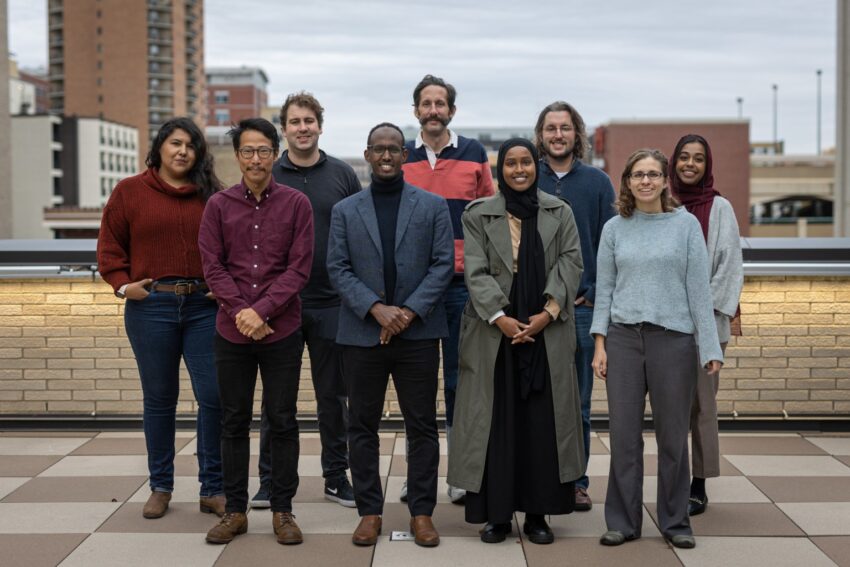
News Leader: True U.S. History Must Be Reported
Manny Garcia, assuming the presidency of the News Leaders Association, representing the nation’s mainstream newspaper and online news editors, said in an introductory message that we “cannot truly celebrate Black History Month without first learning and continuing to document the unvarnished reality of American history; only then, can we speak truth to power.”
Garcia’s statement, coming as state legislatures around the country seek to banish the teaching of the nation’s racial history when it makes white students or parents “uncomfortable,” is but one of several developments affecting diversity and inclusion efforts in the news business.
In the Twin Cities, the Star Tribune in Minneapolis announced a partnership with the Sahan Journal, a nonprofit newsroom dedicated to covering Minnesota’s immigrants and communities of color.
The announcement follows the encouragement of the News Media Alliance, the news industry’s largest trade organization, that its members replicate a partnership between the Dallas Morning News and Texas Metro News, one of Dallas’ Black newspapers, as the industry grapples anew with diversity and inclusion.
The Star Tribune tweeted that the first story from the partnership is a report that immigrants in Minnesota died of COVID-19 at twice the rate of U.S.-born Minnesotans during the first year of the pandemic, according to a recent University of Minnesota study.
Also surfacing are new studies examining progress on newsroom diversity, inclusion and retention since the “racial reckoning” began after the George Floyd murder in 2020.
 Garcia (pictured), who became editor and vice president of Texas’ Austin American Statesman in January 2021, said in his message, “For me, the presidency is very personal.
Garcia (pictured), who became editor and vice president of Texas’ Austin American Statesman in January 2021, said in his message, “For me, the presidency is very personal.
“My family is an example of when tyranny destroys the freedoms that we so cherish. My grandparents and parents lost their freedom and livelihoods when a communist dictatorship took over Cuba.
“Press freedoms disappeared. Demagoguery, censorship and repudiation became – and remain – the tools of the bully.
“We increasingly, and alarmingly, are witnessing similar tactics from too many of our elected leaders and public officials in our beloved communities and country. Our role as editors requires us to speak out against the growing attacks on transparency and press freedoms. . . .”
Garcia also said, “We strive to be the front-line resource for rising diverse journalists who seek a leadership role. . . . We have reopened the NLA diversity survey to give digital and print newsrooms more time to participate, and we expect to roll out the results of our 2021 diversity survey in a few weeks. . . .
“The results will show more newsrooms participated for the first time, though the overall number of newsrooms continues to lag. . . .
“A major win coming from our diversity discussion is that we tied entering three of our contests this year to participation in the 2021 survey. Next year, all contest entries will require newsrooms to have participated in this second round of diversity collection data for 2022 now underway. . . .”
- Kiara Alfonseca, ABC News: Critical race theory thrust into spotlight by misinformation
- Molly Beck, Milwaukee Journal Sentinel: Evers vetoes bill that would have barred school lessons on systemic racism
- Jonathan Capehart, Washington Post: What about Black students’ ‘discomfort’?
- Eileen Drage O’Reilly, Sara Fischer, Axios: Ethnic media outlets sprout up in U.S. “news deserts” (Nov 13, 2021)
- Sahan Journal: Mukhtar Ibrahim, founder of Sahan Journal, wins ‘Emerging Leader of the Year’ award in national nonprofit news competition (Oct. 13, 2021)
- Colin McCrossan, Philadelphia Inquirer: Slavery is a part of the history of Philadelphia’s suburbs
Greg Lee Jr., senior assistant managing editor for talent and community at the Boston Globe, planned more diverse event programming.
. . . Reckoning Brought Limited DEI Progress
Last year, researchers at the University of Minnesota’s Hubbard School of Journalism and Mass Communication began interviewing staffers at the Star Tribune in Minneapolis who played central roles in facilitating their newsrooms’ new efforts at diversity, equity and inclusion, known as DEI, Danielle K. Brown wrote Thursday for Columbia Journalism Review.
“Eleven people participated in interviews, typically spending an hour or more with us.
“Many said the reckonings around racial justice and equity that unfolded in 2020 created new opportunities to re-energize diversity efforts. Michael McCarter, who is the managing editor for standards, ethics, and inclusion at USA Today, set up an internal mentorship program; Greg Lee Jr., who is senior assistant managing editor for talent and community at the Boston Globe, planned more diverse event programming.
“Most felt that their colleagues were generally more open to acknowledging inequities in their workplaces and discussing diversity issues and corrective measures publicly, rather than behind closed doors. ‘We were able to leverage that moment to speak and act and confront things extremely openly,’ one editor said. ‘We were calling it what it was: systemic racism.’ “
Brown also wrote, “I conducted another, focused exclusively on DEI efforts. This survey was smaller, but respondents were proportionally more diverse, and most had reported on race and race relations during their careers. While many in this survey felt their news organizations had made progress with DEI efforts, nearly half believed that DEI issues remained the most pressing challenges facing the journalism industry.
“Journalists of color were more likely to feel pessimistic about DEI-related progress than were their white colleagues. Twelve — all but one of whom are people of color — said they felt no significant changes had been made. Several were concerned that much of the DEI work fell on the shoulders of just a few people. . . .”
Separately, in a study of newsroom retention, Mark Coddington and Seth Lewis wrote for the monthly newsletter RQ1, “In a new study in the journal Journalism Studies, the University of Washington’s Matthew Powers said that, “At least in the medium term, the typical local journalism career is likely to be more characterized by inertia or departure than advancement, especially for women and journalists of color. . . .
“The rates of journalists advancing were similar across gender and race/ethnicity groups. Notably, however, the women and journalists of color who advanced were more likely to advance through less prestigious beats and through positions of ‘functional specialization’ — data, analytics, audience work, and copy editing. . . .
“For women and journalists of color, their picture broadly mirrors the larger one but is more bracing: In both groups, more people were out of the industry within six years than maintained their current professional level. And when they advanced, it was through more marginalized channels than their white male counterparts.
“Powers concludes by positing that perhaps ‘the expansion of journalism to include historically-marginalized groups might also sort those individuals into less prestigious and potentially more precarious jobs.’ Instead of generally invoking the notion of a ‘crisis’ in journalism, Powers says, we need to ask more directly, ‘crisis for whom?’ ”
- Emma Carew Grovum, Reynolds Journalism Institute: News managers can take simple steps to better support journalists of color (Feb. 3)
- Sara Guaglione, Digiday: Connecting with diverse audiences’: Mashable’s new editor-in-chief wants to add coverage of inclusion in tech
- Kristen Hare, Poynter Institute: What did the pandemic do to the careers of journalists of color? The answer has felt both evident and unconfirmable.
- HuffPost Black Voices: America, As Told By Black Teens
- Talking TV: Scripps Gets Inclusive In Its Journalism
- Julian Wyllie, Current: How GBH’s inclusion and equity officer is rolling out her four-phase plan for DEI work
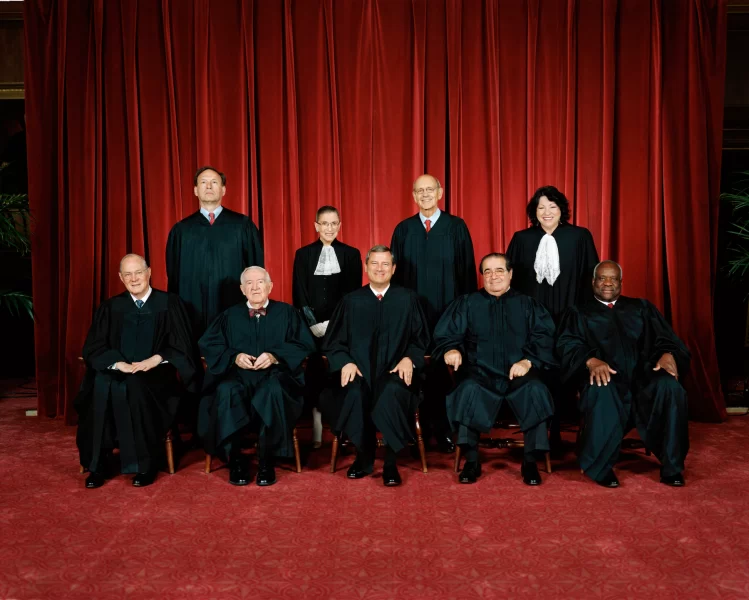
Supreme Court Demographics Have Consequences
“For almost all of its history, the U.S. Supreme Court has been made up of White men,” Amber Phillips wrote for The Washington Post under the headline, “How Supreme Court has shaped American life.” The story was interactive online.
“President Biden has promised to nominate a Black woman to the court for the first time, to replace retiring Justice Stephen G. Breyer. She would be only the eighth person in the court’s 233-year history who was not a White man.
“A number of Senate Republicans have pushed back against Biden’s promise specifically to add a Black woman to the court, saying she would simply be a beneficiary of affirmative action rather than chosen because of her qualifications.
“But only modern presidents have placed a premium on racial and gender diversity when nominating lifelong appointees to the Supreme Court — a stark reality visible in the court’s class photos.
“The result is that the interpretations of Americans’ rights — for instance, the right to have a lawyer, the right to abortion, protection against gender-based discrimination — have been made almost exclusively by White men.
“This lack of representation has led to some controversial decisions in modern times, such as the court’s allowing police to stop and frisk a person on the suspicion that the person might be involved in a crime, or not closing the door entirely to discriminating against women in the hiring process. . . .”
- Rekha Basu, Des Moines Register: What made Supreme Court vaccine debates extra frustrating? Having COVID-19 while listening. (Jan. 14, updated Jan. 21)
- Jamelle Bouie, New York Times: The Supreme Court Is Just Doing What the Supreme Court Does
- Mary C. Curtis, Roll Call: Black women are Americans, and representation raises the bar — legal and otherwise (Feb. 3)
- Lisa Desjardins, “PBS NewsHour”: Examining President Biden’s pledge to diversify the federal judiciary (Feb. 2)
- Editorial, Kansas City Star: Josh Hawley would see any Black woman as a ‘hard woke left’ choice for Supreme Court
- Editorial, News & Observer, Raleigh, N.C.: NC has already shown why adding a Black woman will strengthen the Supreme Court
- John Gramlich, Pew Research Center: Black women account for a small fraction of the federal judges who have served to date
- Colbert I. King, Washington Post: Biden should have been ready to make his Supreme Court pick
- Ruben Navarrette Jr., Washington Post Writers Group: Will Biden go with regionalist affirmative action on high court pick?
- Eugene Robinson, Washington Post: Republicans’ animus toward Biden’s Supreme Court pledge shows how they’re no longer veiling their racism
- Kimberly Atkins Stohr, Boston Globe: The extra unseen talent of Biden’s Supreme Court nominee and all Black women in law
- Linn Washington Jr., WHYY, Philadelphia: Biden’s Supreme Court pledge highlights the stain of race and gender bias on America’s judiciary
NABJ Calls for a Black CEO at CNN
“With Jeff Zucker’s (pictured) resignation as head of CNN due to a consensual relationship with a fellow employee, the National Association of Black Journalists (NABJ) is calling on the leaders of AT&T, WarnerMedia and Discovery to assemble a strong, diverse group of candidates and replace him with a Black CEO,” the association said Feb. 3.
“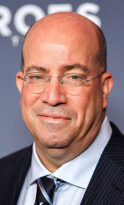 “There are numerous African Americans with the requisite skills to lead CNN and Turner Sports, both divisions of WarnerMedia, and it’s imperative that AT&T and Discovery, which will run the company once their merger is complete, make it clear that diversity is a priority.
“There are numerous African Americans with the requisite skills to lead CNN and Turner Sports, both divisions of WarnerMedia, and it’s imperative that AT&T and Discovery, which will run the company once their merger is complete, make it clear that diversity is a priority.
“ ‘We have seen a sea change in the media industry in the last year,’ said NABJ President Dorothy Tucker. ‘Companies have had to examine themselves and confront their biases in hiring, promoting, and retaining African Americans, minorities, and women. We have welcomed Rashida Jones as president of MSNBC, Kim Godwin as president of ABC News, and Kevin Merida as the top editor of the Los Angeles Times. But we are not satisfied. More needs to be done, including at CNN.’ . . .”
- Ted Johnson, Deadline: WarnerMedia Names Three Executives To Serve As Interim Co-Heads Of CNN Following Jeff Zucker’s Departure (Feb. 2)
- S. Mitra Kalita, Time: RIP, Jeff Zucker’s Masterful Morning Show
- Touré, the Grio: Excuse me, Don Lemon, But Jeff Zucker was not great for Black people
‘Entertainment Masquerading as Journalism’
“I am not so naive as to ignore the fact that journalism has increasingly morphed into a genre of entertainment,” Michael A. Cohen, MSNBC opinion columnist, wrote Feb. 3, after Whoopi Goldberg’s (pictured) two-week suspension for her comments about the Holocaust and whether Jews were a “race.”
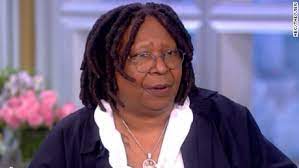 “(For example, CNN is not running documentaries on Princess Diana because she has received inadequate news coverage in the decades since her death.)
“(For example, CNN is not running documentaries on Princess Diana because she has received inadequate news coverage in the decades since her death.)
“But at a time of growing concerns over misinformation, where are news organizations placing the bar?”
During a conversation about book banning and the Holocaust graphic novel “Maus,” Goldberg declared that “the Holocaust wasn’t about race,” because it was “two groups of white people.” She later apologized, but the events sparked widespread discussion over the nature of racism and whether her punishment fit the crime.
Cohen took a different tack. “While the original panel of hosts for ‘The View’ included two journalists, Meredith Vieira and Barbara Walters, the current lineup includes a comedian (Joy Behar), an entertainer (Goldberg), a lawyer (Sunny Hostin) and a TV host (Sara Haines), the last of whom is the only one with a background in journalism. . . .
“Broadcasting a show with five nonexperts talking about the issues of the day, and giving it a place of prominence among your hard news programs, is not upholding the highest journalistic standards.”
“The View” is produced by ABC’s news division.
“This also puts a burden on news consumers. Obviously, it can be difficult to figure out which ‘expert’ can be trusted on any given subject. But odds are better than even that a comedian podcaster is not your best source of information on infectious disease and an entertainer who, on the side, shills for anti-migraine medicines shouldn’t be your go-to for history lessons and public health information.
“In the Wild West of journalism these days, news consumers need to make better choices, but news organizations have a responsibility to give them better options, as well. Entertainment masquerading as journalism is an abdication of responsibility. . . .”
(more to come)
Support Journal-ismsTo subscribe at no cost, please send an email to journal-isms+subscribe@groups.io and say who you are.
Facebook users: “Like” “Richard Prince’s Journal-isms” on Facebook.
Follow Richard Prince on Twitter @princeeditor
Richard Prince’s Journal-isms originates from Washington. It began in print before most of us knew what the internet was, and it would like to be referred to as a “column.” Any views expressed in the column are those of the person or organization quoted and not those of any other entity. Send tips, comments and concerns to Richard Prince at journal-isms+owner@
View previous columns (after Feb. 13, 2016).
View previous columns (before Feb. 13, 2016)
- Diversity’s Greatest Hits, 2018 (Jan. 4, 2019)
- Book Notes: Is Taking a Knee Really All That? (Dec. 20, 2018)
- Book Notes: Challenging ’45’ and Proudly Telling the Story (Dec. 18, 2018)
- Book Notes: Get Down With the Legends! (Dec. 11, 2018)
- Journalist Richard Prince w/Joe Madison (Sirius XM, April 18, 2018) (podcast)
- Richard Prince (journalist) (Wikipedia entry)
- February 2018 Podcast: Richard “Dick” Prince on the need for newsroom diversity (Gabriel Greschler, Student Press Law Center, Feb. 26, 2018)
- Diversity’s Greatest Hits, 2017 — Where Will They Take Us in the Year Ahead?
- Book Notes: Best Sellers, Uncovered Treasures, Overlooked History (Dec. 19, 2017)
- An advocate for diversity in the media is still pressing for representation, (Courtland Milloy, Washington Post, Nov. 28, 2017)
- Morgan Global Journalism Review: Journal-isms Journeys On (Aug. 31, 2017)
- Diversity’s Greatest Hits, 2016
- Book Notes: 16 Writers Dish About ‘Chelle,’ the First Lady
- Book Notes: From Coretta to Barack, and in Search of the Godfather
- Journal-isms’ Richard Prince Wants Your Ideas (FishbowlDC, Feb. 26, 2016)
- “JOURNAL-ISMS” IS LATEST TO BEAR BRUNT OF INDUSTRY’S ECONOMIC WOES (Feb. 19, 2016)
- Richard Prince with Charlayne Hunter-Gault, “PBS NewsHour,” “What stagnant diversity means for America’s newsrooms” (Dec. 15, 2015)
- Book Notes: Journalists Follow Their Passions
- Book Notes: Journalists Who Rocked Their World
- Book Notes: Hands Up! Read This!
- Book Notes: New Cosby Bio Looks Like a Best-Seller
- Journo-diversity advocate turns attention to Ezra Klein project (Erik Wemple, Washington Post, March 5, 2014)
When you shop @AmazonSmile, Amazon will make a donation to Journal-Isms Inc. https://t.co/OFkE3Gu0eK
— Richard Prince (@princeeditor) March 16, 2018

